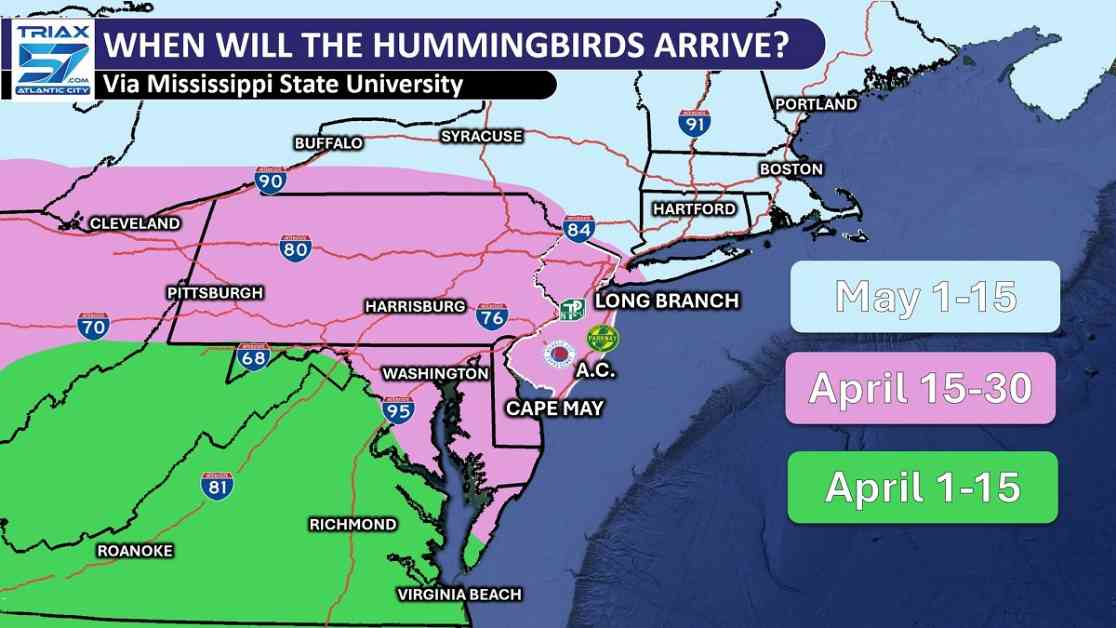As spring emerges on the horizon, a delightful sight awaits nature enthusiasts across Maryland—the anticipated return of hummingbirds. These tiny, vibrant creatures embark on an incredible journey northward, marking the transition of seasons with their arrival. Originating from Central America or Mexico, these energetic birds commence their migration to breeding grounds in the southern United States as early as February, with some venturing even further north as spring progresses.
Expert Insights on Hummingbird Migration
Meteorologist Joe Martucci sheds light on the fascinating migration patterns of hummingbirds, shedding light on their remarkable journey. With a keen eye for detail, Martucci explains that these agile creatures travel during the day to take advantage of nectar-rich flowers, sustaining themselves by spotting food sources along the way. Their low-flying technique allows them to maintain energy levels for the arduous trek ahead, while cleverly utilizing tailwinds to expedite their journey with minimal energy expenditure.
During migration, hummingbirds can cover impressive distances, with an average daily flight span of up to 23 miles. In more challenging stretches, such as crossing the Gulf of Mexico, these resilient birds may soar up to 500 miles without a break. Their swift flight speed typically ranges between 20-30 miles per hour, but can escalate threefold during their captivating courtship rituals, showcasing their agility and grace in the air.
The Marvels of Hummingbird Physiology
To prepare for their migration feat, hummingbirds undergo a remarkable transformation, bulking up by 25-40% of their body weight to store the necessary energy for their long-haul flights. Once airborne, their metabolic rate skyrockets, with heart rates peaking at 1,260 beats per minute and wings fluttering 15 to 80 times per second. These unparalleled physiological adaptations make hummingbirds among the most efficient long-distance travelers in the animal kingdom.
As the first heralds of the spring season, male hummingbirds typically lead the charge, staking out prime territories before the females arrive. While most hummingbird populations embark on migratory journeys, some clusters remain year-round in specific areas, such as the upper Pacific Coast, the southern Gulf states, and sections of the southeastern Atlantic coast, showcasing the diverse behaviors within these captivating species.
For eager Maryland residents awaiting the return of these enchanting birds, hummingbird migration data suggests a sighting window between April 15 and April 30. This anticipated arrival coincides with the blooming of flowers and an abundance of nectar, symbolizing the official onset of spring in the region and heralding a season of renewal and natural wonder.
David M. Higgins II, an intrepid journalist with a passion for uncovering compelling narratives, hails from Baltimore and was raised in Southern Maryland. With a deep-rooted connection to the East Coast landscape, Higgins’ storytelling prowess illuminates the intricate tapestry of nature’s wonders, capturing the essence of the hummingbird migration with vivid detail and unwavering enthusiasm.

















